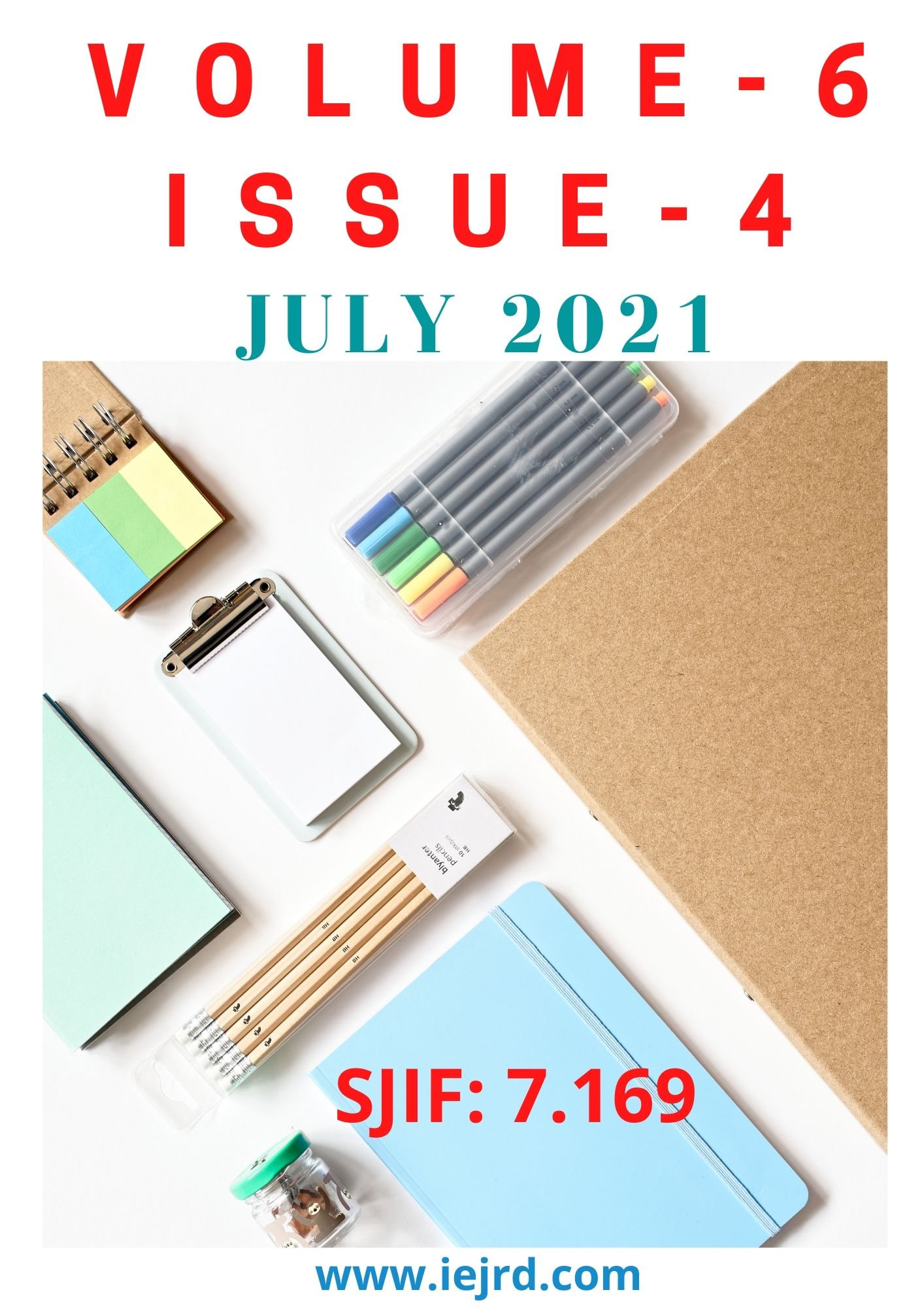LOW MOLECULAR METABOLITES OF FUNGI. 13,24-DIMETOXYSTACHIBOTRIN FROM STACHYBOTRYS CHARTARUM
Keywords:
Stachybotrys chartarum, chromatography, spectrum, correlation, interactions, system, coordinate, mycoses, fungus, low molecular weight, metabolites.Abstract
As a result of studies carried out in our country, information was obtained on the distribution of fungi of the genus Stachybotrys, their morphology, ultrastructure, cytology, biotechnology of cultivation on cellulose-containing nutrient media, ensiling of such solid plant waste as guzapoya, rice straw, corn stalks.
Stachybotrys chartarum produces a number of low molecular weight compounds. A technique has been developed for the isolation and separation of the sum of extractive substances - waste products of the fungus Stachybotrys chartarum grown under laboratory conditions on various nutrient media.
Cause and formulation of the problem, purpose of the work: The purpose of the study is the selection of active local strains of micromycetes, forming 13,24-dimethoxystachibotrin and stachibotral, the study of their morphological cultural properties, the creation of a complex biological product based on promising local strains that protect against fungal phytopathogens.
Downloads
References
Bilay V.I., Pidoplichko N.M. Toxin-forming microscopic fungi and diseases caused by them in humans and animals. Kiev, Naukova Dumka, -1970. -292s.Jarvis BB (2003) Stachybotrys chartarum: a fungus for our time. Phytochemistry 64:53–60
Kaise H, Shinohara M, Miyazaki W, Izawa T, Nakano Y, Sugawara M, Sugiura K (1979) Structure of K-76, a complement inhibitor produced by Stachybotrys complementi, nov. sp. K-76. J Chem Soc Chem Commun 1979:726–727
Miyazaki W, Tamaoka H, Shinohara M, Kaise H, Izawa T, Nakano Y, Kinoshita T, Hong K, Inoue K (1980) A complement inhibitor produced by Stachybotrys complementi, nov. sp. K-76, a new species of fungi imperfecti. Microbiol Immunol 24:1091–1108
Yamamoto I, Muto N, Murakami K, Suga S (1989) An enzyme immunoassay for K-76 monocarboxylic acid, a novel anticomplementary compound. J Immunoassay 10:153–167
Kaise H, Shinohara M, Miyazaki W, Izawa T, Nakano Y, Sugawara M, Sugiura K (1979) Structure of K-76, a complement inhibitor produced by Stachybotrys complementi, nov. sp. K-76. J Chem Soc Chem Commun 1979:726–727
Ayer WA, Miao S (1993) Secondary metabolites of aspen fungus Stachybotrys cylindrospora. Can J Chem 71:487–493
Jarvis BB, Salemme J, Morais A (1995) Stachybotrys toxins. 1. Nat Toxins 3:10–16
Sakai K, Watanabe K, Masuda K, Tsuji M, Hasumi K, Endo A (1995) Isolation, characterization and biological activities of novel triprenyl phenols as pancreatic cholesterol esterase inhibitors produced by Stachybotrys sp. F-1839. J Antibiot 48:447–456
Ogawa K, Nakamura M, Hayashi M, Yaginuma S, Yamamoto S, Furihata K, Shin-Ya K, Seta H (1995) Stachybocins, novel endothelin receptor antagonists, produced by Stachybotrys sp. M6222. II. Structure determination of stachybocins A, B and C. J Antibiot 48:1396–1400
Koide H, Hasegawa K, Nishimura N, Narasaki R, Hasumi K A new series of the SMTP plasminogen modulator with a phenlylamine-based side chain. J Antibiot.2012. 65:1–7.
Koide H, Narasaki R, Hasegawa K, Nishimura N, Hasumi K) A new series of the SMTP plasminogen modulator with a phenlglycine-based side chain. J Antibiot. 2012. 65:91–93
Kamolov LS, Aripova SF, Isaev MI, Stakhibotrin - a new natural compound. // Chemistry of nature, compound., Special. release -1997-, p. 4,
Kamolov L.S., Aripova S.F., Isaev M.I. Low molecular weight metabolites of fungi. I. Stachibotrin from Stachybotrys chartarum. // Chemistry of nature, compound., -1997-, p. 599-607.
Kamolov L.S., Aripova S.F., Tashkhodzhaev V., Isaev M.I. Low molecular weight metabolites of fungi. II. Clarification of the stachibotrin structure. // Chemistry of nature, compound., -1998-. p.666.
Kamolov L.S., Aripova S.F., Isaev M.I. On the issue of low molecular weight metabolites of fungi. // Chemistry of nature, compound., Special issue, -I998-, p. 7.
Kamolov L.S., Aripova S. R, Isaev M.I. Low molecular metabolites of Stachybotrys chartarum. // Abstracts of 3rd International Symposium on the Chemistry of Natural Compounds. Bukhara (Uzbekistan), 1998, -p. 250.
Kadirova D.B, Kamalov L.S, Bobakulov K.M, Aripova S.F Chemical constituents of the toxic mold Stachybotrys chartarum. Chem Nat Compd. 2013. p. 583–584
Kamolov L.S., Tashkhodzhaev V., Aripova S.F. Crystal structure of cyclopentanone oxime from the toxic fungus Stachybotrys chartarum. // Chemistry of nature, compound.., -2015, -№ 3.-p. 514-515.
Kamalov L. S., Zakirova R. P., Aripova S. F. Growth-stimulating activity of the extract of the microscopic fungus Trichoderma harzianum //Uzbek Biological Journal. -2019, -№ 3. -p. 13-16.
Turaeva B, Soliev A, Eshboev F, Kamolov L, Azimova N, Karimov H, Zukhritdinova N and Khamidova Kh. The use of three fungal strains in producing of indole-3-acetic acid and gibberellic acid. // Plant Cell Biotechnology and Molecular Biology. -2020. -№ 21.-p. 32-43.
Kamolov L, Tojiyeva S, Xasanov Sh, Axmedov O, Berdimurodov E. Stachyibotrus toxic microscopic fungus low molecular metobolites// Plant Cell Biotechnology and Molecular Biology. -2021. -№ 22.-p. 50-61.
Li Y, Wu CM, Liu D, Proksch P, Guo P, Lin WH (2014b) Correction to chartarlactams A-P, phenylspirodrimanes from the sponge-associated fungus Stachybotrys chartarum with antihyperlipidemic activities. J Nat Prod 77:435
Li Y, Wu CM, Liu D, Proksch P, Guo P, Lin WH (2014b) Correction to chartarlactams A-P, phenylspirodrimanes from the sponge-associated fungus Stachybotrys chartarum with antihyperlipidemic activities. J Nat Prod 77:435
Sasaoka M, Wada Y, Hasumi K (2007) Stachybotrydial selectively enhances fibrin binding and activation of Glu-plasminogen. J Antibiot 60:674–681 Sawada H, Nishimural N, Suzuki E, Zhuang J, Hasegawa K, Takamatsu H, Honda K, Hasumi K (2014) SMTP-7, a novel small-molecule thrombolytic for ischemic stroke: a study in rodents and primates. J Cereb Blood Flow Metab 34:235–241
Wu B, Oesker V, Wiese J, Malien S, Schmaljohann R, Imhoff JF (2014) Spirocyclic drimanes from the marine fungus Stachybotrys sp.strain MF347. Mar Drugs 12:1924–1938
Kamolov Lukman Sirajiddinovich (- Candidate of Chemical Sciences, Head of the Department of Chemistry, Karshi State University).
ORCID: 0000-0001-7316-0425, email: kamolov.luqmon@mail.ru, +998 99 413 03 71
Tojiyeva Sevara Nomozovna (- Lecturer at the Department of Chemistry, Karshi State University).
Downloads
Published
How to Cite
Issue
Section
License

This work is licensed under a Creative Commons Attribution-NonCommercial-NoDerivatives 4.0 International License.


















